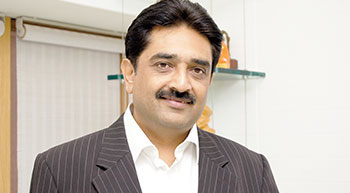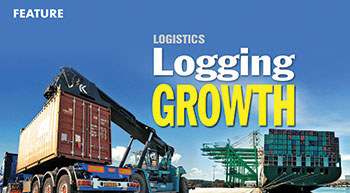The macroeconomic aspects of GST haven´t been taken into account. If the government says that it will collect more revenue, then that means that prices will have to rise because it´s an indirect tax. If prices rise, then industrial output would tend to stagnate or decline.
FlashNews:
Godrej Aerospace Delivers Human-Rated Vikas Engine for Gaganyaan Mission
Railway Board Tightens Garbage Disposal Rules for Trains
IndiGo Launches India’s First Direct Flight to Cambodia from Kolkata
RIB Software India Expands Market Presence
India Approves Royalty Reform to Unlock Critical Minerals, Bolster Green Energy, Cut China Reliance
Kolkata Surges as Warehousing Sector Rebounds 64% in Q3 2025; Pune and Bengaluru Lag Behind: Vestian
Inox Wind Secures 100 MW Turbine Supply Order in Gujarat
India Eyes 10% Share of Global Green Hydrogen Market by 2030: Shripad Yesso Naik
CareEdge-ESG and RAEX Ink Strategic MoU to Advance Global ESG Collaboration
Power Minister Reaffirms Investor Confidence in India’s Infrastructure and Energy Agenda
Wabag Invests in Deep Tech Startup Nimble Vision Under Blue Seed Programme
Mumbai Airport Reports Sustainability Gains with Green Energy, Innovation
Minister Joshi Calls for Stakeholder Action to Drive India’s Leadership in Green Hydrogen Revolution
Power Minister Launches India’s First MWh-Scale Vanadium Flow Battery at NTPC’s R&D Hub
IndiGo Launches Daily Direct Flights Connecting Delhi and Guangzhou
Sembcorp Wins 150MW Dispatchable Renewable Energy Project Under SJVN’s 6,000 MWh Tender
RVNL Expands Beyond Rail with ₹5.35 Billion Visakhapatnam Port Authority Infrastructure Deal
ABB Launches Cybersecure Gas Chromatograph to Transform Industrial Process Analytics
IN-SPACe and SIDBI Launch ₹100 Billion Fund to Propel India’s Space Startups
GST may be disruptive for the next two-three years for certain sectors
In general, our view is that GST is going to bring in a lot of efficiencies as far as logistics goes and logistics also has a direct bearing on the cost of some of these raw materials which are going to be core to the development of any infrastructure project.
Project costs may increase owing to GST credit restrictions in many sectors
The Model GST Law specifically treats a ´works contract´ (including any transfer of property in goods in the execution of such contract) as a ´service´. However, determining the nature of a particular agreement, or a set of agreements, for a project (i.e., whether it qualifies as a works contract or not) would still be critical from the perspective of the place of supply, the taxable value, the applicable rate of tax and the compliances to be undertaken given the peculiar and varied nature of arrangements in the infrastructure sector, involving multiple scopes of work and multiple participants (consortium) for either a full project or for parts of a single project.
Growth Stimulus Treatment (GST)
That our country´s GDP growth rate is going to get a bump-up if the Goods and Services Tax was to be implemented, is a consensus among many experts, as well as the industry bodies, although they may differ regarding the extent of push GST is likely to give our economy, with the quantum suggested varying from 1-3 per cent of incremental increase in growth
GST and its impact
The Goods and Services Tax (GST) is the most radical taxation reform that is set to alter India´s economic prospects. A single indirect tax, encompassing all goods and services, is surely a welcome change.
Turnaround time in Indian major ports is a matter of concern
The current cargo handling capacity of Essar Ports is 150 MTPA. Essar Ports specialises in development and operations of ports and terminals for handling liquid, dry bulk, break bulk and general cargo.
There has been no formal training at all till date
The Logistics Sector Skill Council is unique in its own way. Logistics is an activity that pervades all industry, either in the form of pure-play logistics (ports, infrastructure, freight forwarding, air cargo, transportation) or in-plant logistics.
Lack of infrastructure is a basic problem
More than 90 per cent of India´s inbound and outbound cargo is moved by the freight forwarding industry. Our association is the apex body and is a national body for this industry. We are a very important link between the trade and the government as we represent the interests of the trade to the government and assist in bringing the relevant policies to the trade.
Hard infrastructure has to be backed by soft infrastructure
We should have had it 20 years ago, but we still don´t have it. It was thought of when the Congress was in power and it was the BJP which was the principal opponent to it. Now when the BJP is in power it is the Congress which is the principal opponent. Our national parties need to come to terms over what is good for our nation and leave their individual stands aside.
Logging Grwoth
The Indian logistics market is expected to grow at a CAGR of 12.17 per cent by 2020, driven by the growth in the manufacturing, retail, FMCG and e-commerce sectors.
India is expected to register a steady uptick in logistics growth, on the back of the improvement in the country´s infrastructural environment.










